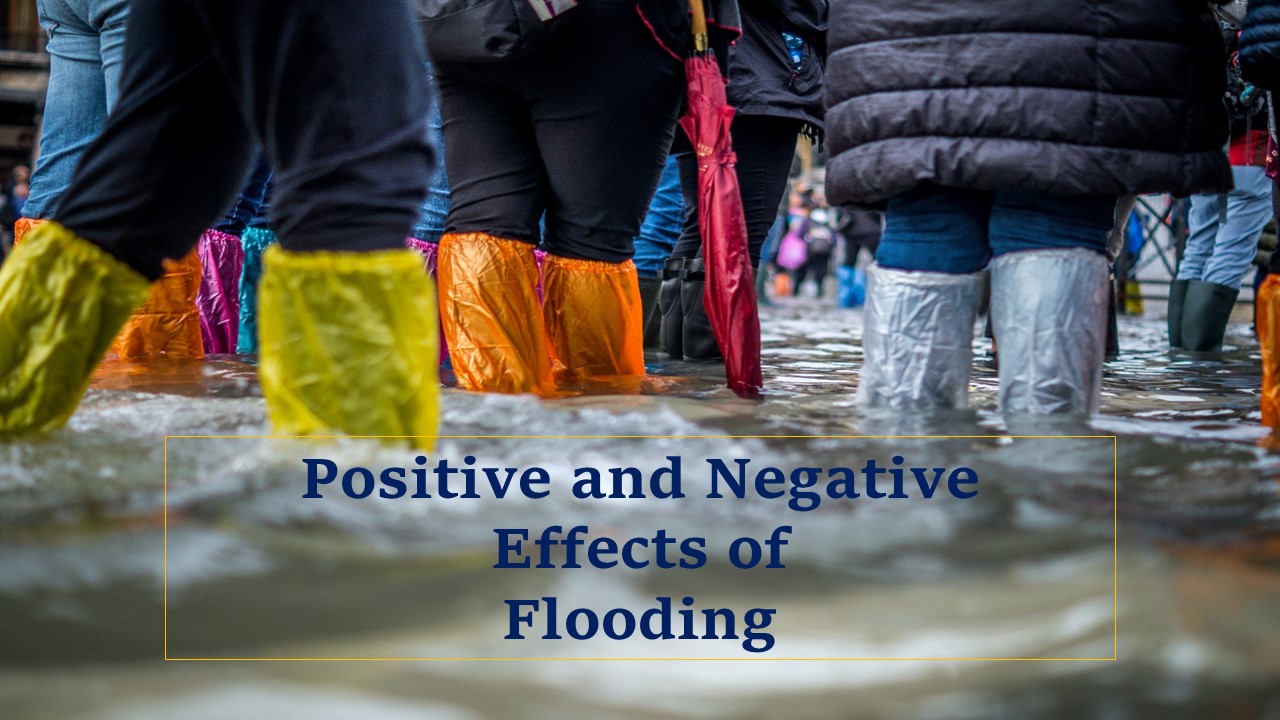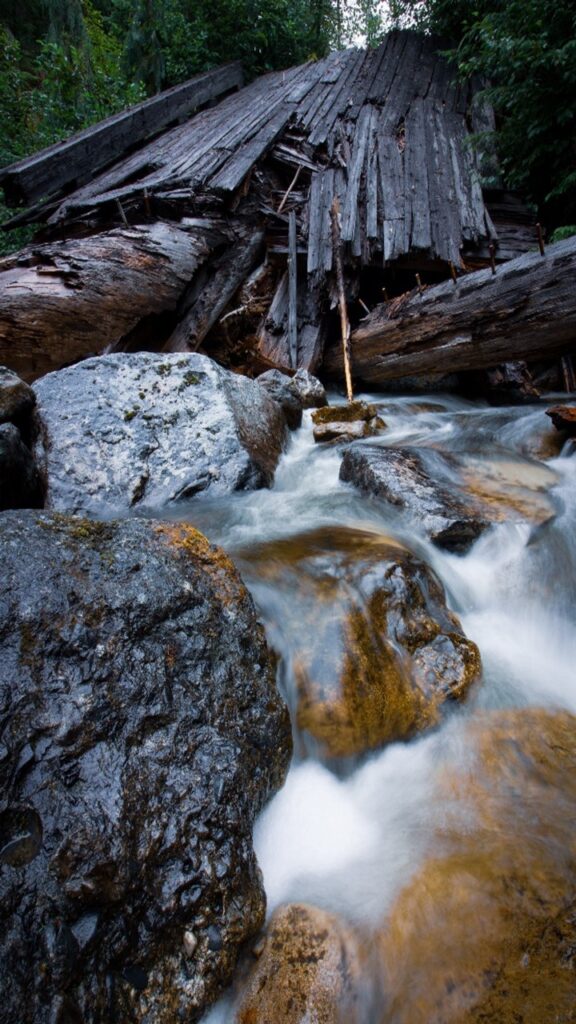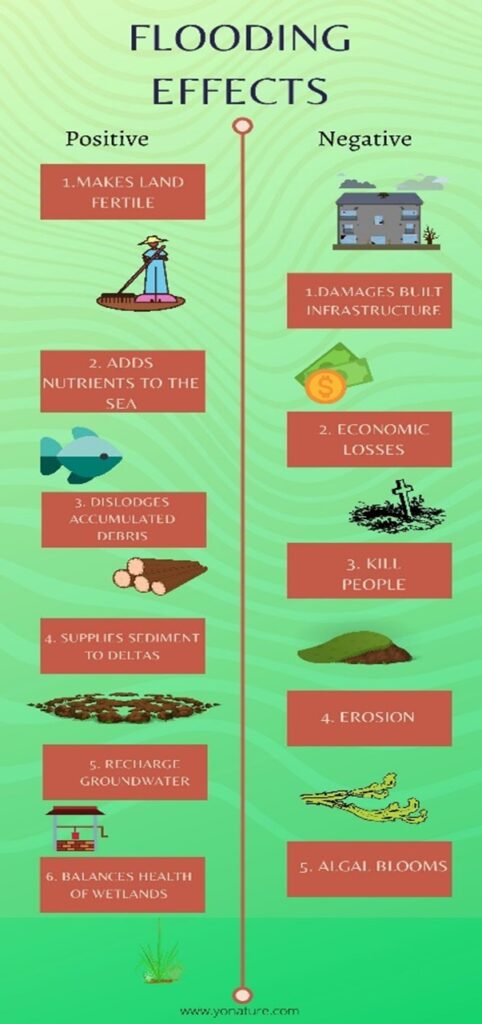Effects of flooding: Positive, Negative, Examples

Effects of flooding can be both positive and negative.
For millennia, people have settled near rivers and lakes because water is easily accessible and the soil is fertile. Back in the days though, people constructed on higher grounds allowing riverine floods to enrich the land with nutrients. Floods are in reality very important processes for the natural environment. And humans also benefit from them. However, they also have a number of negative effects. For example, foods are almost always catastrophic in Bangladesh as it is a low-lying country less than 1 m above sea level.
What makes people vulnerable to floods?
As a matter of fact, floods do not affect communities and nations in the same way. To illustrate this, almost 1/3 of the Netherlands lies below sea level. Consequently, frequent flooding is a major issue. Yet, the Dutch have various means to protect their country from floods such as barriers, pumps and dikes.
Factors that make people vulnerable to floods
So, then, what makes people vulnerable to floods? While there is a list of factors, we will concentrate on the most important ones including:
- Poverty and inequality,
- Unplanned and rapid urbanization,
- Climate change and variability,
- Improper natural resource management,
- Lack of disaster risk consideration,
- Limited availability of technology,
- Lack of environmental regulations,
- Unsustainable uses of natural resources,
- Pandemics and epidemics, and
- Socio-economic factors (e.g. ethnicity, religion, gender, age, health status etc.)
Positive effects of flooding
In many rural regions around the world, the livelihoods of many communities depend on annual flood cycles. Examples include riverine settlements along the Amazon forest like Peruvian and Columbian communities. This is because floods facilitate transportation, fish migrations and make the soil fertile.
Thus, seasonal flooding has many positive effects such as making the land fertile, adding nutrients to the sea, dislodging accumulated debris, supplying sediment to deltas, recharging underground water levels, and balancing the health of wetlands.
1. Flooding makes the land fertile
Perhaps, one of the most recognized benefits of flooding is that it makes the land fertile. As the water eventually recedes, it leaves behind fine sand, clay, silt and organic matter. This is why floodplains are one of the most fertile agricultural areas in the world. Ancient Egyptians understood this principle well as they farmed along the Nile. They thus called episodic flooding of the Nile as ‘The Gift of the Nile’.
And additionally, the flooded soil environment allows the cultivation of many crops like rice. Asian communities traditionally cultivate rice in paddies which the is staple diet for nearly half the world’s population.

2. Flooding adds nutrients to the sea
Likewise, small seasonal floods contribute nutrients to the sea. Small organisms like plankton feed on them and multiply. In this way, they support higher aquatic food webs including humans.
3. Dislodges accumulated debris
Also, the force of rushing floodwater can dislodge materials that block rivers and estuaries. Debris like branches, logs, boulders often hinders the movement of water in rivers. Sometimes, they can inhibit the flow of water altogether leading to droughts downstream.

This can be quite catastrophic during the dry season when the flow of water is already meagre. Zebras, impalas and other wildlife can die of thirst, hunger and weakness because of this. Thus, flooding during the rainy season not only fill rivers but also wipe away all unwanted debris.
4. Supplies sediment to deltas
Deltas basically form when sediment accumulate across rivers faster than the sea removes it. They are very productive regions that also protect the coast against waves and storms. As floodwaters hit estuaries, they also deposit sediment on deltas, thus fortifying them.
5. Floods recharge groundwater
Indeed, excess water from floods recharges groundwater supplies. Where the land is permeable, it infiltrates the ground through aquifers (loose rocks and sediment).
This groundwater can then flow down to rivers or bust out the land surface as natural springs.
6. Flooding balances the health of wetlands
Floods help enormously in balancing the health of wetlands by maintaining the chemical balance, restoring breeding grounds and increasing biodiversity stock.
a. Helps to maintain chemical balance
These marshes are, in fact, the natural sponges in our environment. They help to capture and store pollutants which then undergo various physical and chemical changes. Floodwater thus helps to restore the chemical balance in the marshes making them more effective in pollution control.
b. Restore breeding grounds
Additionally, wetlands are important breeding sites for a number of creatures like fish, shrimps and crabs. Actually, a number of organisms depend on wetlands to spawn and grow. As wetlands are relatively calm and sheltered, they are the safest places for juveniles to develop.
Thus, when marshes flood, they bring in more nutrients. More food is then available for juveniles to develop and grow.
c. Increase biodiversity stock
In the same manner, the rich diversity of creatures (insects, clams, fish etc.) in marshes feed on the excess nutrients. They grow and multiply thus becoming food for other organisms like birds, salamanders, turtles etc. In this way, the outburst of food attracts a plethora of creatures into wetlands.
Floods also help certain animals to migrate as well as disperse seeds of plants.
Negative effects of flooding
We have to keep in mind that flooding is a natural process in the environment. It becomes a problem when people live/build too close to floodplains. Or when they modify the land so much that it can no longer absorb water.
So, the negative effects of flooding are damage to built infrastructure, economic losses, loss of lives and social disruption, erosion and algal blooms.
1. Floods damage built infrastructure
Without a doubt, rushing water is very powerful. Whether it comes from a river overflow or a dam break, floods can destroy everything along their way.
They inundate houses, buildings, bridges and damage property. They can also initiate fires leading to explosions. Very often, they also damage drainage systems especially sewage networks. Waste matter thus spills leading to pollution. Or they contaminate water bodies making the water unfit for drinking.
As an example, the 2010 flood event in Pakistan damaged the property of 20 million people. And 10 million had no access to safe drinking water.
2. Flooding leads to economic losses
Such destruction obviously leads to drastic economic losses. Hurricane Katrina remains the most expensive flood in US history, totalling US $81 billion.
As floods destroy transportation and communication networks, people cannot work. They also wipe out agricultural land or transmit diseases to farm animals. In 2019, two storms flooded Malawi, Mozambique and Zimbabwe destroying 780,000 hectares of agricultural land.
Regions that depend on coastal tourism and associated businesses suffer significantly as well. Floods can severely affect their properties or even discourage tourists from visiting such places. While such businesses often have insurance cover to build back, it is yet another battle to get hold of that money.
3. Loss of lives and social disruption
When caught unaware, floods can kill thousands to millions of people at one go. This is especially real in Asia where people are mostly farmers who live close to floodplains. In fact, one of the worst floods ever occurred in China in 1931 on the Yangtze River. Torrential rain flooded a 1300 km2 area and killed around 4 million people directly and indirectly.
Moreover, floods can injure a number of people or lead to mental health issues. Very often, they also cause disease outbreaks such as diarrhoea and gastroenteritis as water becomes polluted.
And on top of everything, as they destroy crops and farms, they disrupt the livelihoods of many communities.
4. Extreme floods cause erosion
As it is, extreme flooding events can wipe away significant amounts of sediment. This can eventually lead to bank erosion, collapse or even landslides where the terrain is steep.
For example, monsoon flooding causes severe erosion in the state of Assam, India. The width of the Brahmaputra River has increased by 15 km because of bank erosion!
5. Flooding causes algal blooms
Unfortunately, floods can also stimulate algal blooms in the sea, lakes and rivers. The load of nutrient especially phosphorous and nitrogen stimulate algae to grow and multiply rapidly. Eventually, they cover the surface of the water preventing oxygen from penetrating inside. As a result, organisms that live inside die.

References
- Langill, J.C. and Abizaid, C., 2019. What is a bad flood? Local perspectives of extreme floods in the Peruvian Amazon. Ambio, pp.1-14.
- Keller, E. and DeVecchio, D., 2015. Natural hazards: earth’s processes as hazards, disasters, and catastrophes. Pearson Higher Education AU.

it was really helpful i loved it as a student.One best part was that you guys gave both long and short explanation.
Pingback: Effects of wildfires: Positive, Negative, Examples - Yo Nature
Pingback: Effects of Droughts: Positive, Negative, Examples - Yo Nature